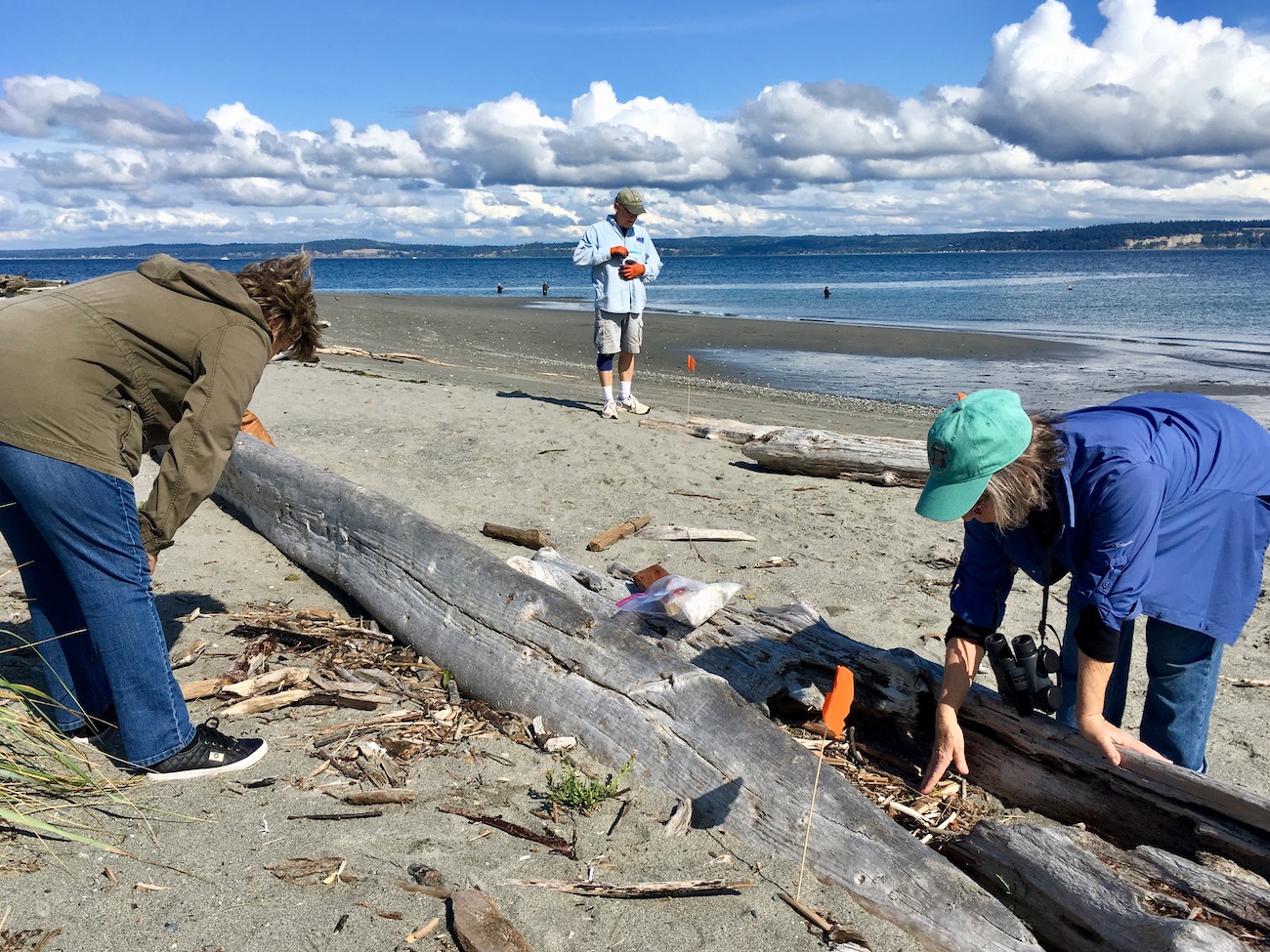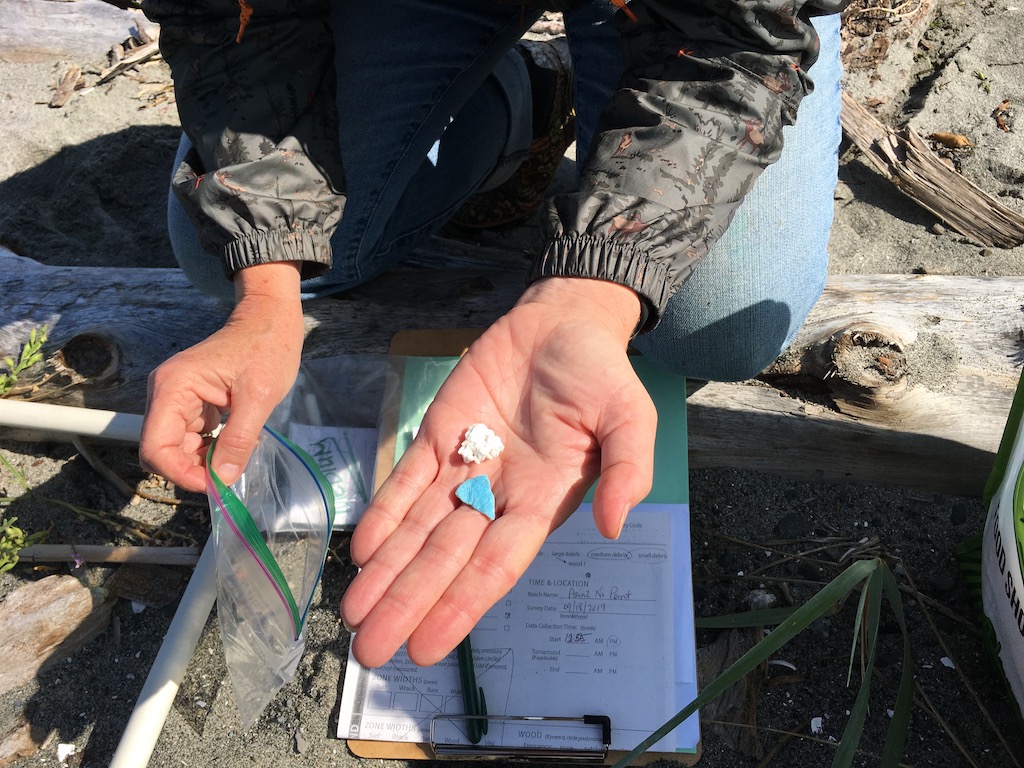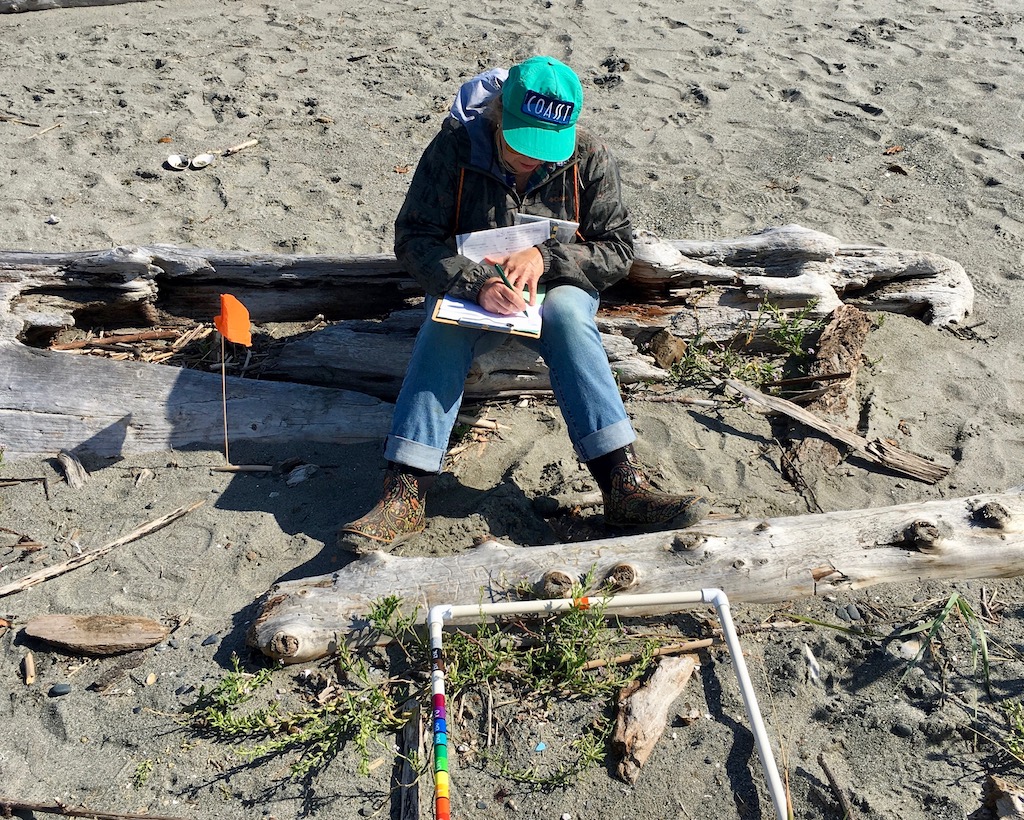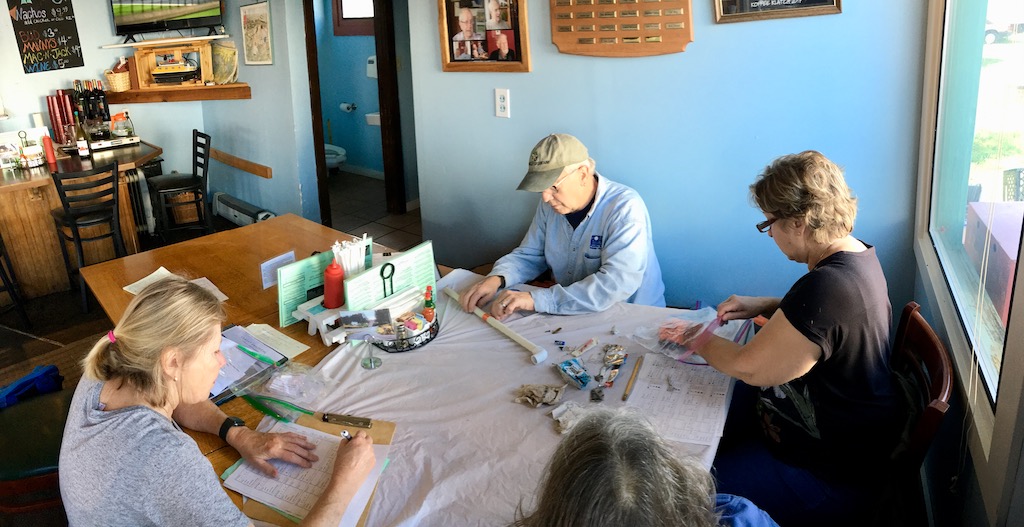A sense of stewardship
This notion that it might be fun for people to go out on the beach once a month and look for garbage (or dead birds) strikes one as a somewhat counterintuitive appeal; most citizen science projects ask their participants to engage in more pleasant activities, like tracking blooming flowers, or watching (live) birds. Still, COASST has managed to muster several hundred people from four states. The key, says Yurong He, a sociologist who works as a postdoctoral researcher with the program, is to foster a sense of stewardship among the corps of volunteers—not just for the beaches they survey, but also the data they produce.
“People come to the program wanting to know about their beach,” He says. As they learn about their site, they become attached to it. (Often, they live close to it.) But as volunteers spend years with the project, their interests modulate, He has found through a series of surveys. The longer they stay with COASST, the more their own feelings begin to align with the program’s goals. They use its lingo. Rather than speak only of beaches and birds (or debris), they also talk of results and studies, and the importance of long-term monitoring work. Their sense of altruism increases: They are working toward a greater good.
Affecting the greater good when it comes to plastic pollution might seem a daunting task, especially when volunteers find refuse that washes up from far, far away. But it does not have to be. “The coast has many nested scales of jurisdiction,” Burgess says. “Learning about the local patterns in debris can tell us about sources that can be acted upon at a local level.”
For the time being, though, the marine debris program is focused on building a robust database as a rich resource for managers. “It takes time and money to dig into the data,” Burgess says. “Right now we have funding to do trainings and provide materials, but we haven’t been able to do as much analysis as we have with beached birds.” Until such funding materializes, she says, anyone who wants to take a crack at the data are welcome to them.
Taking stock
After ten or fifteen minutes of working their way through the different bands, she, Waymen-Palmer, and the Ramseys have finished. They gather their gear, and Sheryl Ramsey starts off down the beach to the next point, which is 538 paces away. The team will repeat their ritual two more times, until they have reached the end of their strand. Later, back at the Hansgrill, Ritchie will spread a plastic sheet across one of the tables and unload their haul. Then she, Waymen-Palmer, and the Ramseys will catalog everything, piece by piece: What it is (if they can tell), how big it is, how weathered it is, whether it is made of plastic, whether it has things growing on it, whether it has loops (which animals could stick their heads through), whether those loops are sharp, whether there is a barcode, and so on. When they are finished, the garbage will go into the trash, where, one hopes, it will stay this time.
But for now, Ritchie and Waymen-Palmer walk a short distance behind Sheryl Ramsey, who steps evenly and deliberately. They scan the beach along the way, perhaps out of habit, until Ritchie spots a lump on the sand just ahead.
“What’s that?” she asks. She and Waymen-Palmer go over to the lump. The thing is a dead bird. It is lying on its back, its legs hanging limply, its wings at its sides. The body is eight or ten inches long, with a black back and white belly.
“Do you know what species it is?” Waymen-Palmer asks.
“I’m not sure,” Ritchie says. “I think it’s a murre.” This makes sense. Around the outer coast and in the Salish Sea, this is the time of year the bodies of young murres begin to show up on the beach. They have fledged recently, but making a living as a seabird is hard, and many die, usually of starvation.
“It’s kind of sad to see,” Ritchie says. “Poor thing.” She takes out her phone and snaps a photo of the murre. Then she and Waymen-Palmer walk on, leaving the body be. They are here to count debris of human origin, after all. Dead birds are not part of their mandate.





